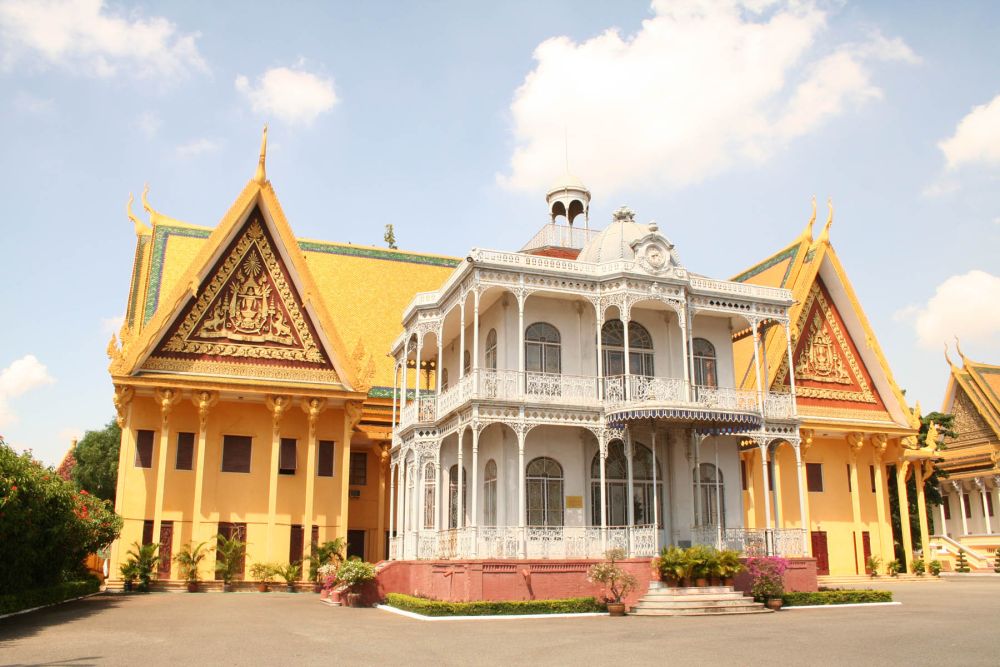

The Royal Palace in Phnom Penh, Cambodia, has been a centerpiece of the nation's heritage and an emblem of the Khmer architectural grandeur since its establishment. The Royal Palace's construction began in 1866, shortly after King Norodom relocated the capital from Oudong to Phnom Penh. The complex serves as the royal residence of the king of Cambodia and is a symbol of the Kingdom.
The rise of tourism at the Royal Palace can be traced back to the early 20th century during the French colonial period, when Cambodia was part of French Indochina. French colonial influence can be seen in the nearby streetscapes and architecture. The French opened the country to visitors and introduced them to the ancient wonders of Angkor as well as the Royal Palace in Phnom Penh.
The post-independence era (after 1953) saw a notable increase in international visitors to Cambodia, as it promoted itself as an exotic destination. The Royal Palace became one of the main attractions in Phnom Penh, showcasing the nation's grandeur and royal traditions. However, this growing tourism industry faced a detrimental halt during the Khmer Rouge regime (1975-1979), when the complex was closed to the public.
With the fall of the Khmer Rouge and the stabilizing of the political landscape in the 1990s, Cambodia reopened its doors to the world, and the Royal Palace was restored as a primary attraction. Efforts were made to preserve traditional architecture and restore the structures that represent the historical and cultural narrative of the Kingdom of Cambodia.
Today, the Royal Palace is a key player in Cambodia’s tourism industry, with visitors drawn to its majestic buildings and ornate decorations, including the Throne Hall and the famous Silver Pagoda. The Palace grounds offer a peaceful retreat from the hustle and bustle of Phnom Penh city life.
In recent years, the global trend of experiential and cultural tourism has positively impacted the Royal Palace's popularity. Tourists are increasingly seeking authentic experiences and a deeper understanding of local history and culture, which the Royal Palace provides. Additionally, the rise of social media has made the Palace a photographic hotspot, promoting further interest amongst international and domestic travelers.
The tourism sector in Cambodia has also adapted to the digital age, with virtual tours and online ticketing options making the Royal Palace more accessible to international visitors. Travel blogs and review sites additionally play a crucial role in shaping the modern tourist's decision-making process.
In the face of increased tourism, there has been a concerted effort by the Cambodian government and international organizations to promote sustainable tourism practices to ensure the lasting preservation of the Royal Palace. These include regulating visitor traffic and participating in conservation projects to maintain the historical integrity of the site.
In summary, the Royal Palace of Phnom Penh encapsulates the rich history and culture of Cambodia and continues to evolve as a treasured destination amidst the shifting landscapes of global tourism.